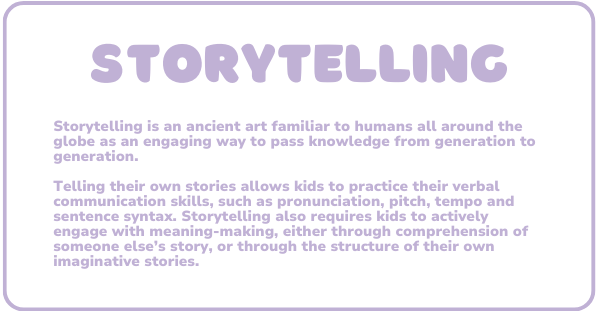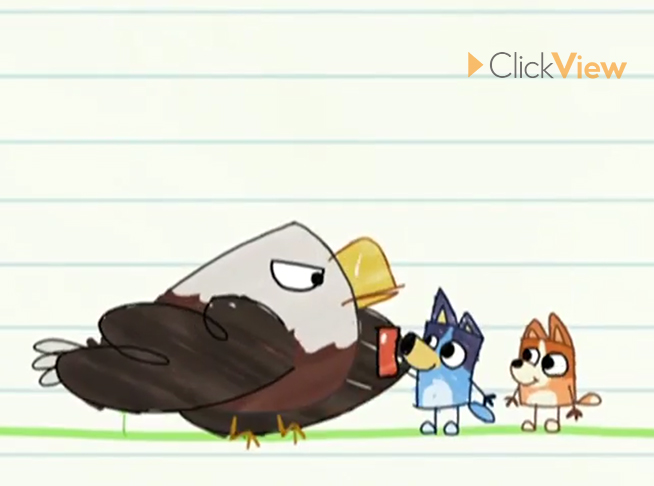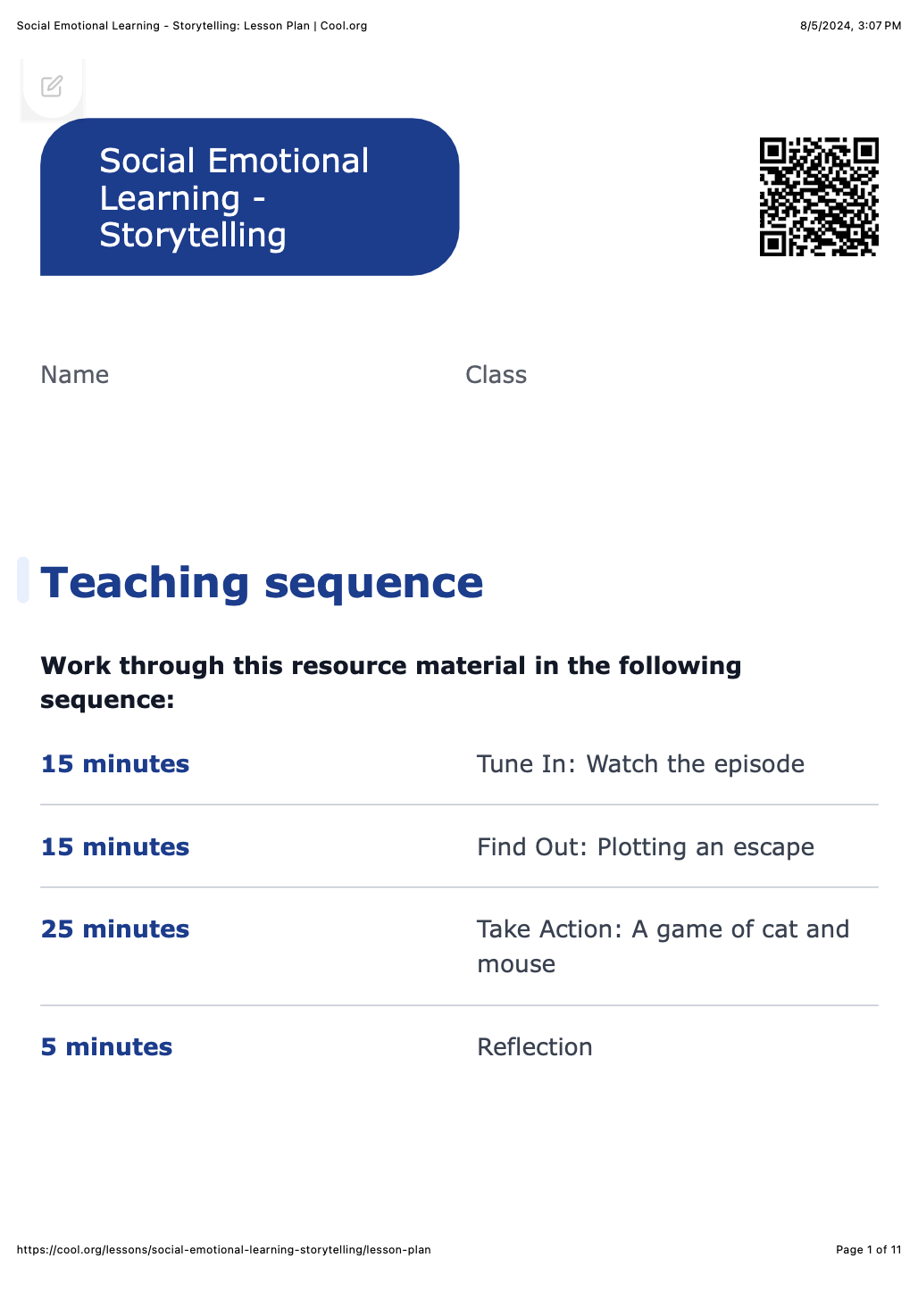Lesson summary
The animated series Bluey serves as a valuable tool in fostering children's development of imagination, curiosity, and social and emotional learning.
This lesson focuses on the capability of storytelling. Students will work together to create a story of a cat and mouse chase, sharing and responding to ideas from their peers. They will develop their improvisation skills and their understanding of characters and their motivations.
This suite of resources supports emotional and social learning and oral language development through a values framework. Each lesson uses intentional teaching strategies to develop a specific value. This lesson focuses on:

Click here for a full list of the values that underpin these lessons.
This lesson showcases a Bluey episode, which can be viewed on ClickView. Don't have a ClickView subscription? Bluey is also available on ABC iView. For real life!
Learning intentions
Students will:
- accept and expand on the ideas of other students to build a simple story
- consider the motivations, goals and feelings of simple characters.
Success criteria
Students can:
- follow the logical sequence of a plot
- accept a proposed plot point and respond with a new plot point
- identify the characters of a simple story
- identify the goals of these characters
- reflect on the motivations and meanings of character actions
- illustrate an event from a group-devised story.
Lesson guides and printables
Curriculum links
Select your curriculum from the options below.
Lesson details
Curriculum Mapping
Australian Curriculum (v9.0) content description:
Foundation - Year 2 Drama
- Create and co-create fictional situations based on imagination and/or experience (AC9ADR2C01)
Foundation English
- Retell and adapt familiar literary texts through play, performance, images or writing (AC9EFLE05)
- Interact in informal and structured situations by listening while others speak and using features of voice including volume levels (AC9EFLY02)
- Create and participate in shared editing of short written texts to record and report ideas and events using some learnt vocabulary, basic sentence boundary punctuation and spelling some consonant–vowel–consonant words correctly (AC9EFLY06)
Year 1 English
- Discuss literary texts and share responses by making connections with students’ own experiences (AC9E1LE02)
- Create and deliver short oral and/or multimodal presentations on personal and learnt topics, which include an opening, middle and concluding statement; some topic-specific vocabulary and appropriate gesture, volume and pace (AC9E1LY07)
- Orally retell or adapt a familiar story using plot and characters, language features including vocabulary, and structure of a familiar text, through role-play, writing, drawing or digital tools (AC9E1LE05)
Year 2 English
- Identify features of literary texts, such as characters and settings, and give reasons for personal preferences (AC9E2LE02)
- Discuss the characters and settings of a range of texts and identify how language is used to present these features in different ways (AC9E2LE03)
- Create and edit literary texts by adapting structures and language features of familiar literary texts through drawing, writing, performance and digital tools (AC9E2LE05)
Syllabus outcomes: DRAES1.1, DRAS1.1, EN1-OLC-01, EN1-CWT-01, EN1-UARL-01, ENE-OLC-01,
General capabilities: Literacy, Critical and Creative Thinking
Relevant parts of Foundation - Year 2 Drama achievement standards: Students use play, imagination, arts knowledge, processes and/or skills to create and share arts works in different forms. Students demonstrate arts practices and skills across arts subjects. They create arts works in a range of forms. Students pretend and imagine as they create roles and situations in improvised drama and/or dramatic play. They share their work in informal settings.
Relevant parts of Foundation Year English achievement standards: Students listen to texts, interact with others and create short spoken texts, including retelling stories. They share thoughts and preferences, retell events and report information or key ideas to an audience. They retell, report information and state their thoughts, feelings and key ideas.
Relevant parts of Year 1 English achievement standards: They create short written and/or multimodal texts including recounts of stories with events and characters. They share ideas and retell or adapt familiar stories, recount or report on events or experiences, and express opinions using a small number of details from learnt topics, topics of interest or texts.'
Relevant parts of Year 2 English achievement standards: Students interact with others, and listen to and create spoken texts including stories. They create written and/or multimodal texts including stories to inform, express an opinion, adapt an idea or narrate for audiences. They use text structures to organise and link ideas for a purpose.
Level of teacher scaffolding: Low - Teachers scaffold the discussion and facilitate the group storytelling exercise.
Resources Required
- Lined paper
- Plenty of wall space
- Sticky tape or blutac
- Whiteboard and coloured markers.
Additional Info
This is not an official Bluey lesson. Cool.org does not have an official partnership with Bluey.


Welcome back!
Don't have an account yet?
Log in with:
Create your free Cool.org account.
Many of our resources are free, with an option to upgrade to Cool+ for premium content.
Already have an account?
Sign up with:
By signing up you accept Cool.org's Terms and Conditions(Opens in new tab) and Privacy Policy(Opens in new tab).